#12 in Kazakhstan
Caviar: Basic Information
Pronunciation
Alternative Name(s)
Dish Type
Course
Mealtime
Popular Variations
Caviar: Ingredients and Preparation
Main Ingredients
Main Cooking Method
Preparation Process
Caviar: A Deep Dive
Cultural Significance
Taste
Texture
Aroma
Color
Serving Style
Serving Temperature
Accompaniment
Occasions
Seasons
Special Diets
Calories
Popularity
Popular Similar Dishes
Popular Dining Area
Caviar is a type of traditional food prepared from the salt-cured roe (fish eggs) of sturgeons. The roe is made of unfertilized fish eggs that won’t hatch into fishlings.
Caviar is an exotic and premium delicacy usually sold in tin cans at high prices.
Authentic caviar is often available in black, grey, brown, or gold (rarely) and comes with a unique flavor profile. Plus, this expensive food is always served raw and never cooked.
Read on, and you will discover amazing facts about caviar, like its history, the reasons behind its exorbitant price tags, how it is harvested, what it tastes like, the appropriate methods of serving and storing it, and its health benefits.
I will also tell you about the pros and cons of caviar and common questions about the costly delicacy. Finally, there is often a lot of confusion between caviar and ordinary fish roe, so let me clear up the misunderstanding for you.
Key Points
Caviar Images
What Is the History of Caviar?
The cured sturgeon roe has existed since ancient times. Some of the earliest mentions of caviar date back to Kievan Rus’, an early Slavic state existing from the 9th to the 13th centuries and the cultural ancestor of Russia, Ukraine, and Belarus.
The British royalty has a long-time love for caviar; in 1324, King Edward II enacted a statute decreeing that all sturgeons caught near the British coastline be the monarch’s personal property.
However, caviar only became an expensive delight in the 16th century. Since then, Russia and Iran have been major caviar producers from the Caspian Sea.
The best caviar varieties in the world are beluga caviar, osetra caviar, kaluga caviar, and sevruga caviar, among many others. The rarest type of beluga caviar is called Almas caviar.
Nowadays, sturgeon farms are helping bring down the price of caviar, with China and the US as major suppliers.
Some countries in the South Caucasus and Central Asia that border the Caspian Sea, like Kazakhstan and Azerbaijan, also have caviar industries.
Why Is Caviar Popular in Central Asia?
Caviar is a renowned delicacy in Central Asia, especially in Kazakhstan, because of these countries’ geographical proximity to the Caspian Sea.
This inland sea is one of the world’s most significant sources of sturgeon.
Read on to discover how people in Central Asia and other regions around the world harvest caviar from the sturgeon.
How Is Caviar Harvested?
People traditionally harvest the hard roe, the main ingredient of caviar, by stunning the sturgeon in cold water, slicing open the fish’s belly, and removing the two ovaries. The fish eggs are then rinsed, filtered, weighed, and cured with salt.
The process always kills the sturgeon, so there are some animal cruelty concerns about roe harvesting. Some modern techniques involve massaging the roe out of the fish without harming it, but these methods are still experimental.
Overall, caviar production requires many meticulous steps, adding to the price of the finished product.
Why Is Caviar So Expensive?
Caviar has a sky-high price tag because of the following 3 reasons: its association with luxury, the amount of work required to make it, and its unique flavor profile.
- Luxury status: Caviar became an extravagant delicacy in the 16th century when Western royalty and aristocracy developed a strong liking for it. Prior to that time, only common people ate caviar, which was even served as prison food.
However, the preferences of the rich and powerful turned the salted roe into its current status: a symbol of wealth and luxury.
Today, 1 ounce of high-end caviar usually fetches from US$ 100 to US$ 250 or even higher, whereas more affordable varieties range between US$ 50 and US$ 80.
- Demands for time and effort: A sturgeon needs between 8 to 20 years to reach maturity and start laying eggs, and each one only gives a single yield.
In addition, every step of the caviar-making process is usually done by hand since machinery doesn’t have the required skill.
- Unique flavor profile: Caviar is expensive because of its addictive flavor profile found in no other food. Many people describe caviar tastes like the sea, with a wonderful texture and aromas to boot.
What Does Caviar Taste Like?
Caviar has an umami-packed flavor enhanced with a slightly salty and fishy undertone. High-quality caviar leaves a smooth mouthfeel and a rich finish.
In addition, the salted roe boasts a subtle scent of brine that reminds of the seas and a creamy, buttery, and pleasantly firm texture. The fish eggs should pop in your mouth.
But the flavor of caviar also depends on many other factors, such as its variety. Here are the flavors of the 10 most well-known caviar types:
To bring out the exquisite flavor of caviar, make sure that you serve it the proper way.
How to Serve Caviar?
To enjoy caviar like a pro, remember the following 4 things:
- Chill caviar beforehand: Caviar should be chilled, ideally in the fridge, for a few hours before the meal.
- Keep out the metallic utensils: Don’t use metallic plates and spoons, especially silverware, since they mess up badly with the delicacy flavor of caviar.
But stainless steel or gold utensils are good options. Other ideal choices include glass, porcelain, wood, or mother-of-gold.
- Serve caviar in a small amount: Don’t be greedy with caviar; only take half a spoonful at a time. Consume your portion slowly, and don’t chew.
- Choose the right accompaniments: While the cured sturgeon roe is best enjoyed on its own, it also pairs well with many types of foods and drinks.
What to Serve With Caviar?
You can enjoy caviar with the following dishes and beverages.

Unsalted Bread
Unsalted bread is a type of bread made without salt. It has a neutral flavor, a chewier texture, and a lighter crust.

Blini
Blini is a type of Russian leavened thin pancakes usually made from wheat or buckwheat flour.
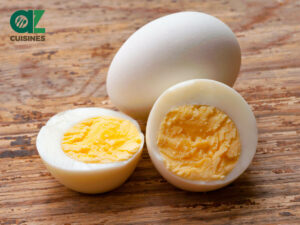
Hard-boiled Eggs
Hard-boiled eggs are eggs that are usually boiled for about 10 minutes or until the yolk and white are fully cooked.
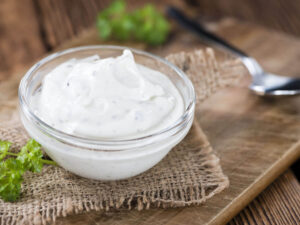
Sour Cream
Sour cream is a thick and tangy dairy product made by fermenting cream with lactic acid bacteria.

Creme Fraiche
Crème fraîche is a European dairy product made by fermenting cream with lactic acid bacteria. It is thicker and fattier than sour cream.
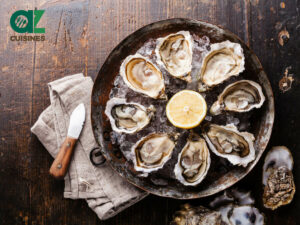
Oysters
Oysters are a type of premium shellfish that can be cooked or eaten raw.

Champagne
Champagne is a sparkling wine originally made with grapes grown in the Champagne region of France.

Vodka
Vodka is a clear distilled liquor with roots in Central, Eastern, and Northern Europe.
For the best caviar experience, correctly storing your salted sturgeon roe is important. Continue reading to learn how.
How to Store Caviar?
The best way to store caviar is to refrigerate it in the temperature range between 0°C to 5°C (32°F to 41°F).
An unopened can of caviar can last for 4 weeks, but once opened, the roe delicacy should be enjoyed within the day or stored for no more than 2 – 3 days. Freezing caviar isn’t recommended.
Follow the instructions above, and your caviar will provide you with all the health benefits it possesses.
What Are the Health Benefits of Caviar?
Caviar is an exceptionally nutritious food rich in protein, beneficial fatty acids (omega-3), vitamins (C, D, and B12), and minerals (iron, calcium, and magnesium).
According to Healthline, caviar is capable of improving brain health, strengthening the immune system, increasing heart health, and slowing skin aging.
Nevertheless, caviar has a high content of calories and cholesterol, so moderate consumption is necessary. Continue reading to discover more upsides and downsides of caviar.
Pros and Cons of Eating Caviar
Below are the most prominent advantages and disadvantages of caviar.
Pros
Cons
After learning about the pros and cons of caviar, distinguishing it from fish roe will help you diversify your choice.
What Are the Differences Between Caviar and Fish Roe?
Caviar stands out from ordinary fish roe in the following 5 aspects: species, prices, colors, flavors, and usage.
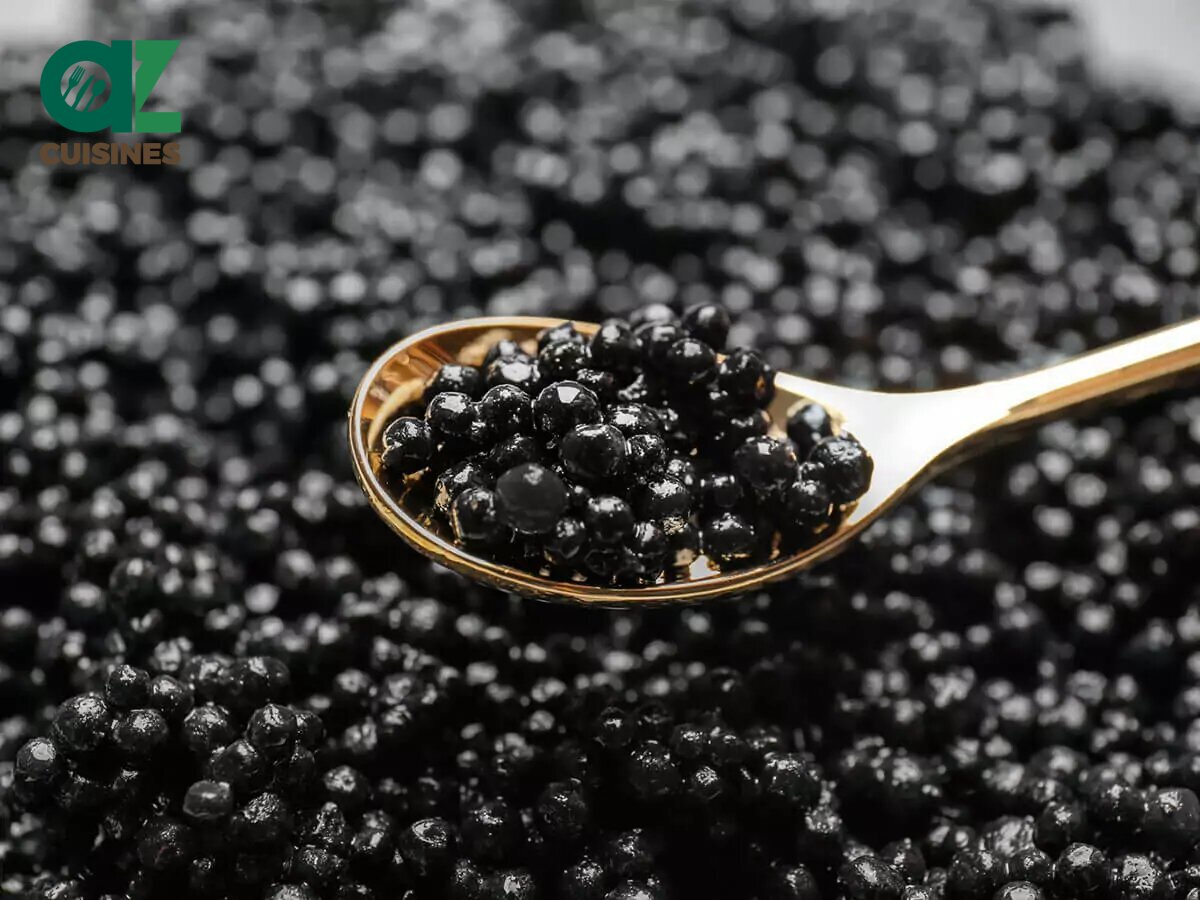
Caviar
Species:
A type of fish roe
Only applicable to the roe of the sturgeon
Prices:
Expensive
Colors:
Black, grey, silver, brown, or gold
Flavors:
A delicate blend of umami, richness, and saltiness
Usage:
Served on its own or with choice accompaniments
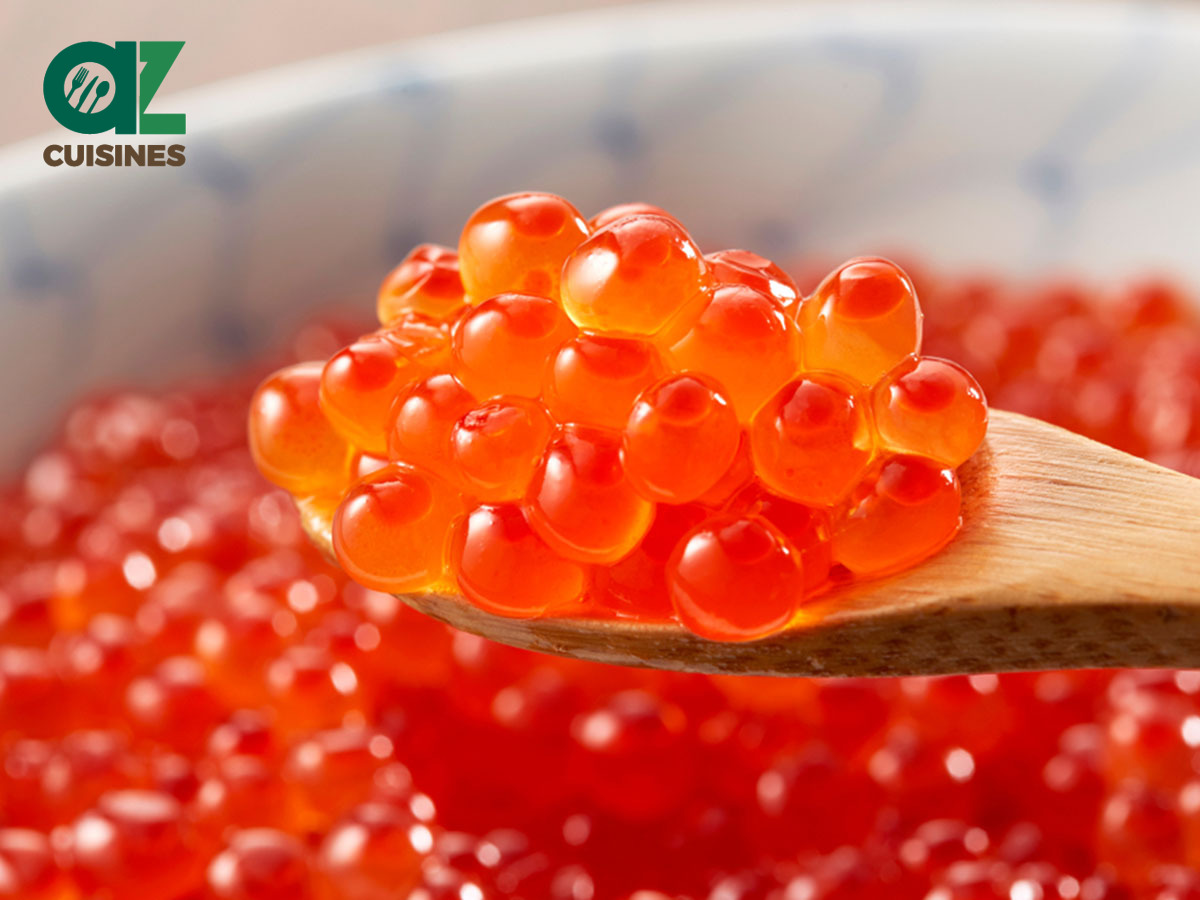
Fish Roe
Species:
Encompasses the roe of various types of fish
Prices:
Relatively affordable
Colors:
Available in multiple vibrant colors
Flavors:
Has a variety of flavors
Generally similar to caviar
Usage:
Used in various ways, especially in preparing sushi
Now, it’s time to learn other top user questions about caviar that will help you consume it in the best way.


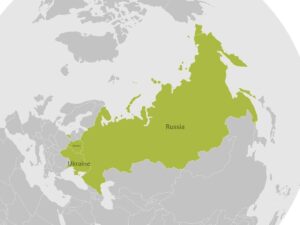
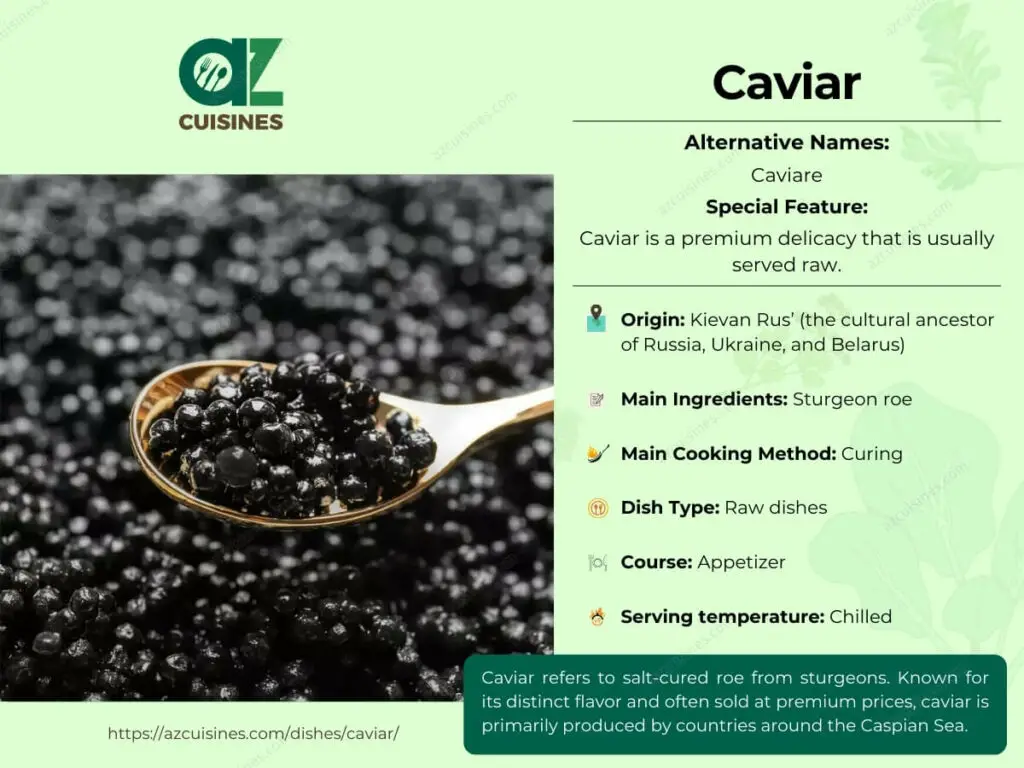
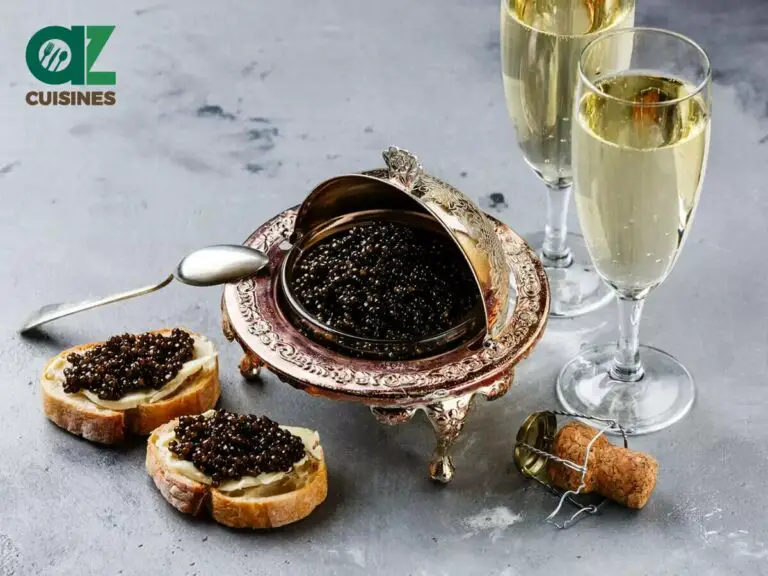
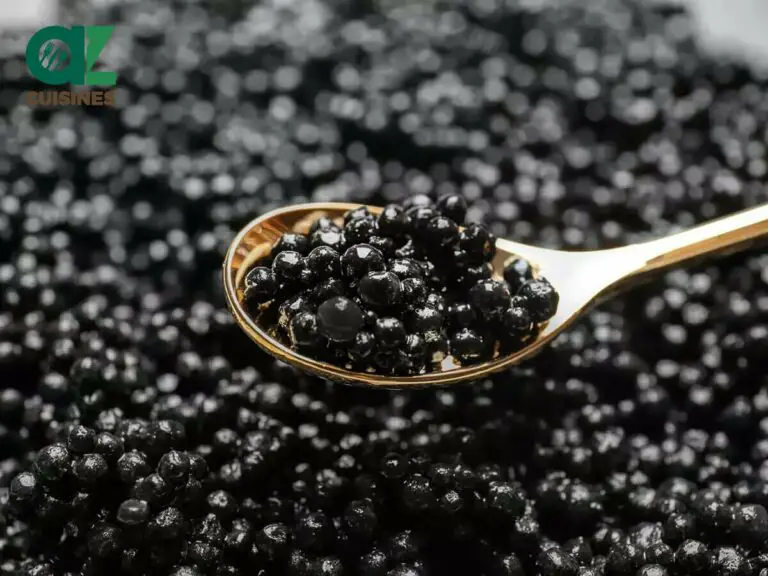
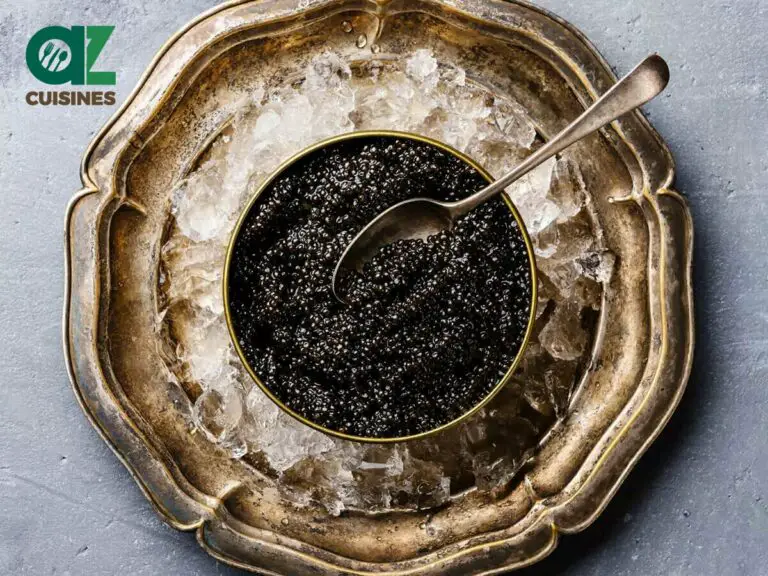
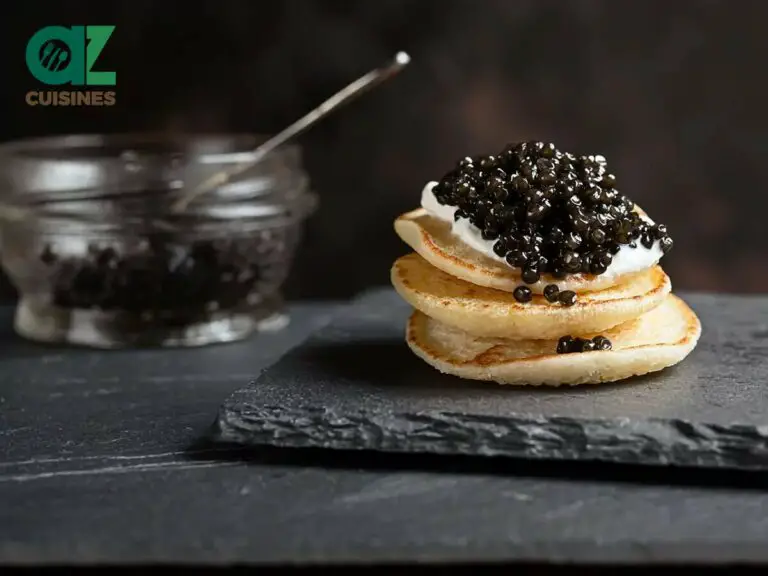
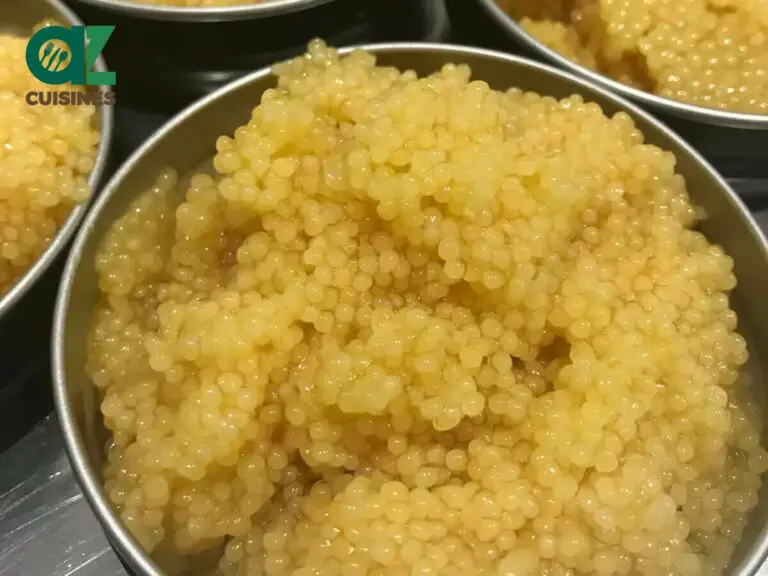
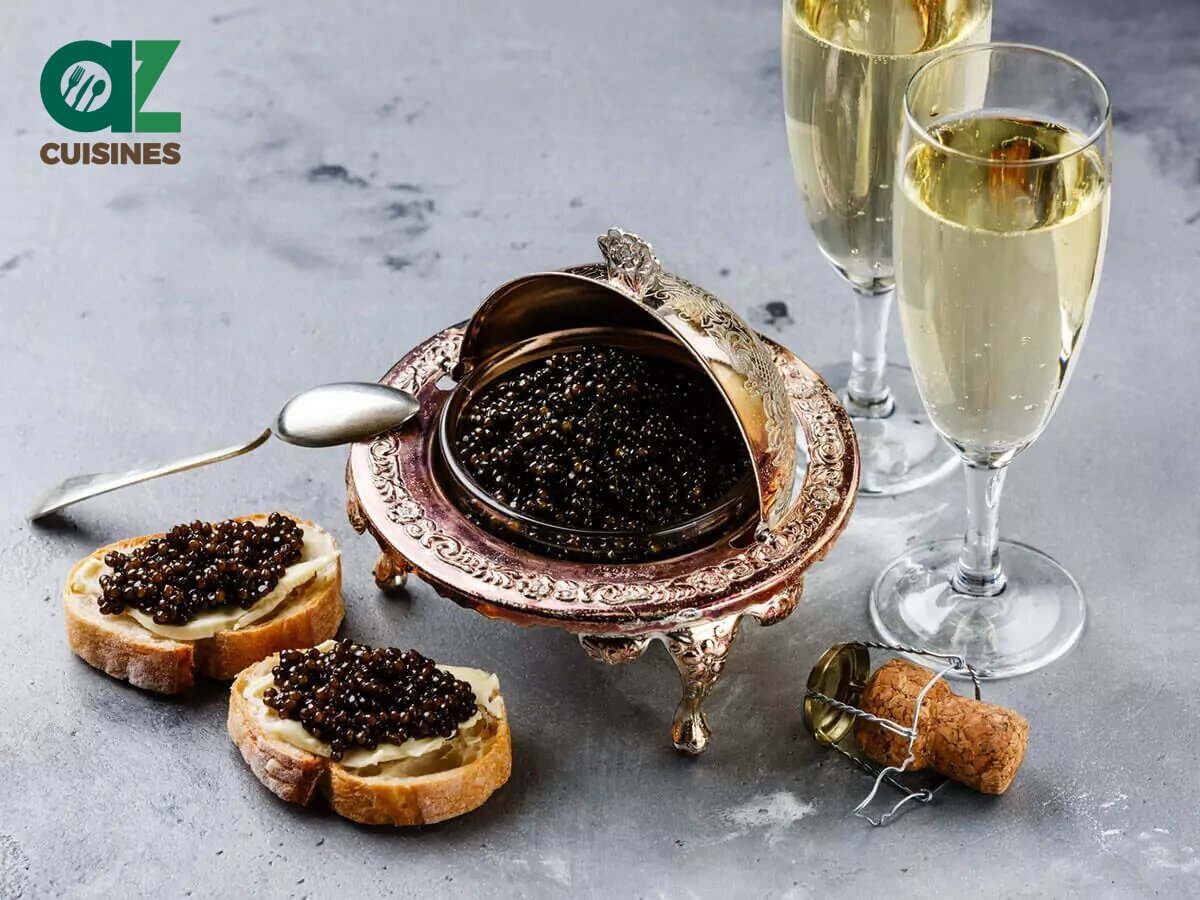
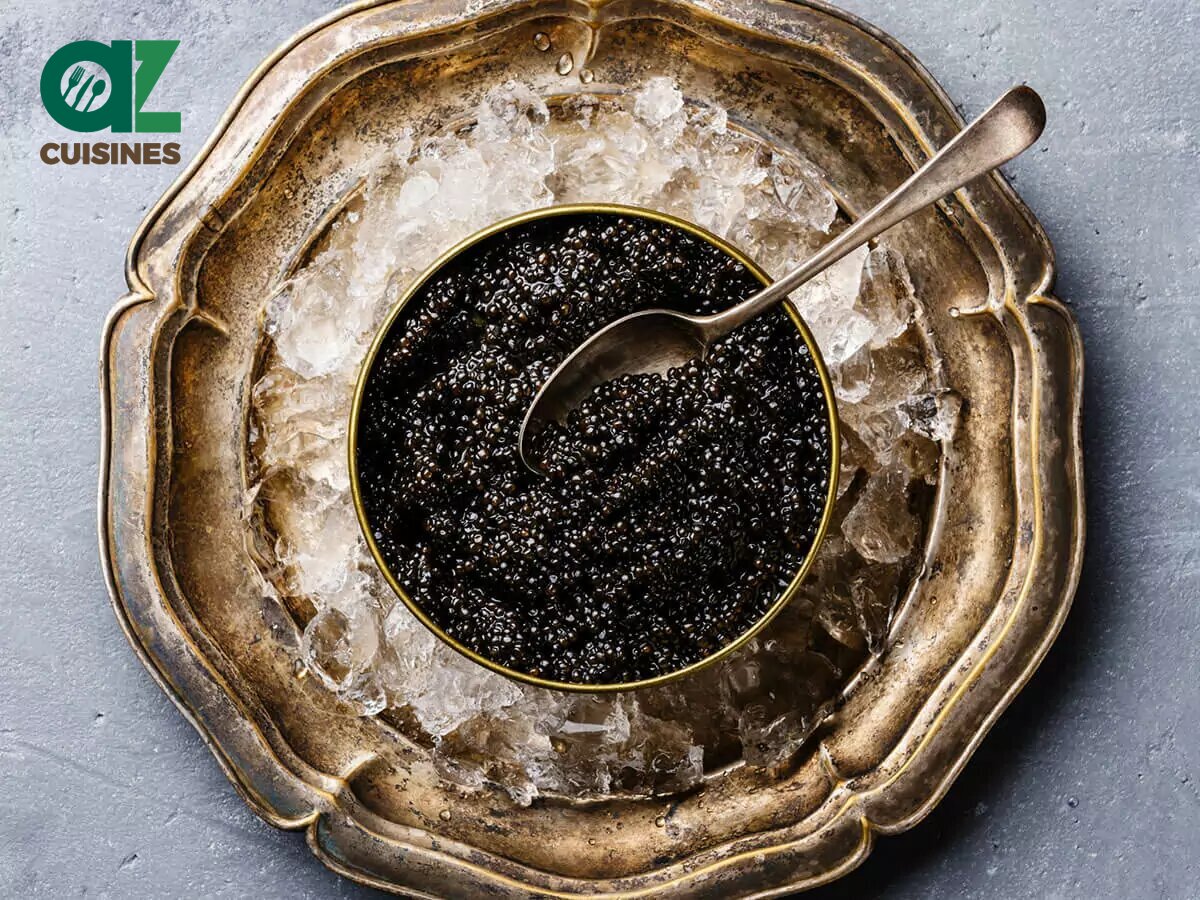
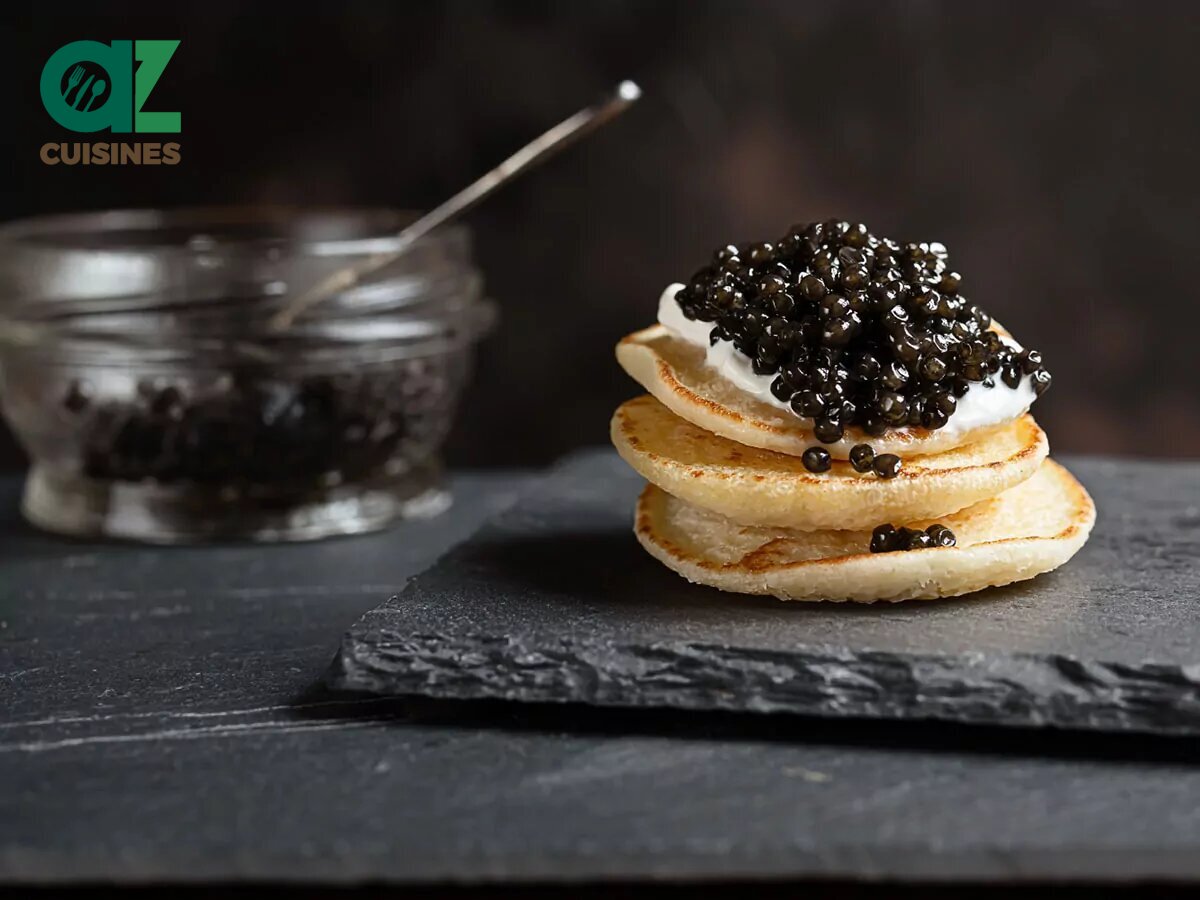
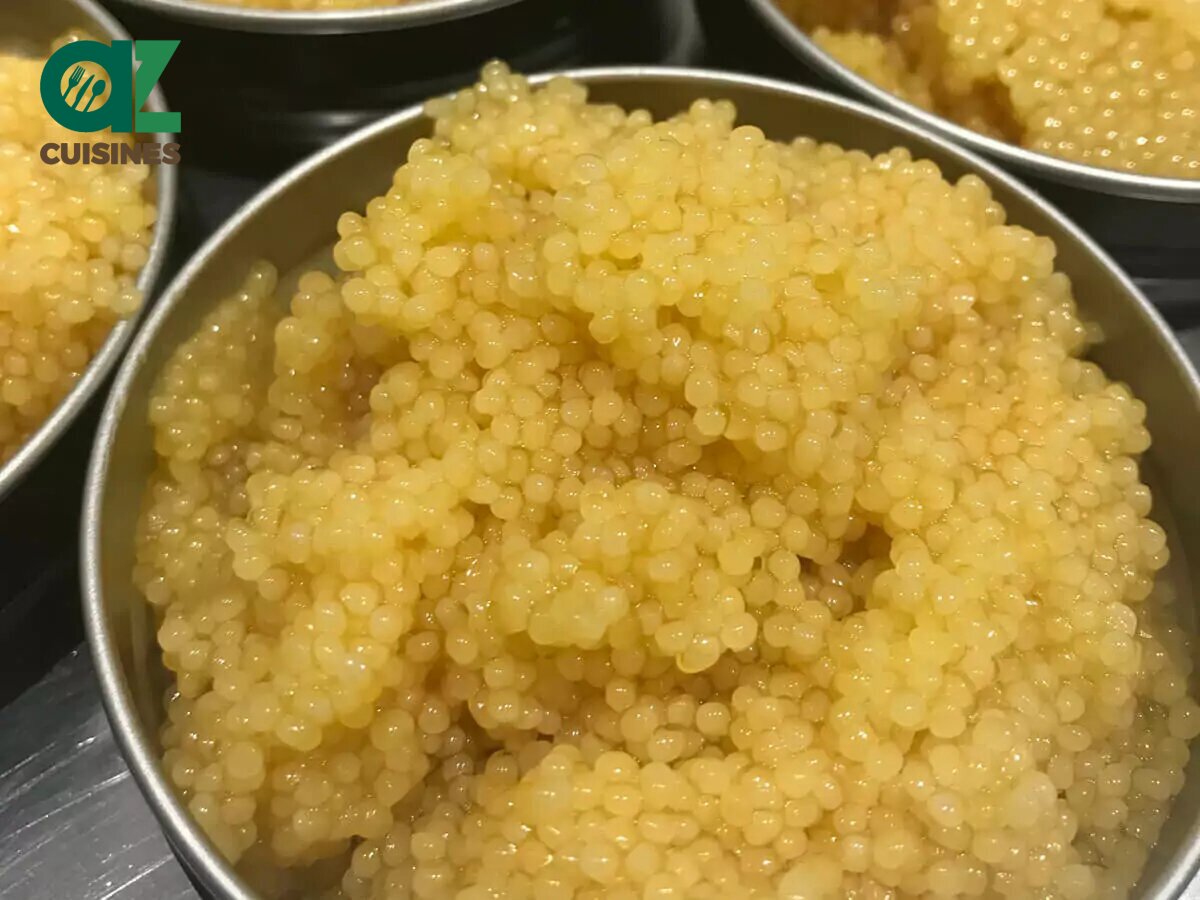
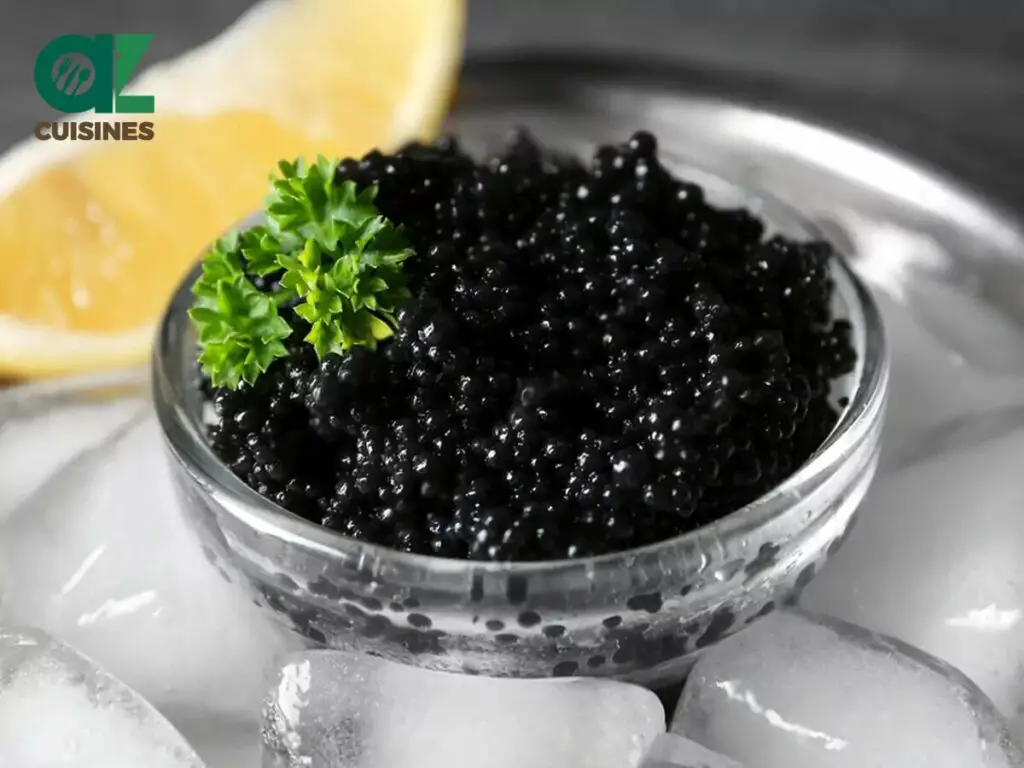
Adam Sam
Senior Food and Drink Editor
Expertise
Food Writer & Recipe Developer, Recipe Tester, Bartender, Cooking-video Maker, Editor In Chief
Education
Adam Sam, an experienced food writer and recipe developer, is passionate about blending diverse culinary traditions, national dishes, and innovative beverages, showcasing his proficiency in both traditional and modern recipe testing.
As the Editor-in-Chief, he elevates culinary content from street food to fine dining, focusing on Western cuisine and types of drinks at azcuisines.com, and is professional in creating engaging cooking videos that simplify complex dishes and ingredients.
His passion for food is evident in his writing, where he uniquely merges various cultures, traditions, and contemporary trends, skillfully combining classic recipes with modern cooking methods.